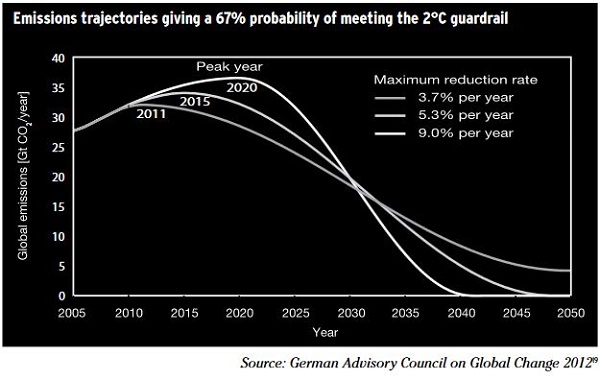After the rally on Sunday 17 November Ben Eltham took a look at climate activism in the digital age and nominated climate policy as “the central battleground of 21st century politics.” Sooner or later, somehow or other, climate activism has to be turned into real politics. As one of the ten themes in the Centre for Policy Development’s Pushing our Luck: ideas for Australian progress Professor John Wiseman, Deputy Director of the Melbourne Sustainable Society Institute at the University of Melbourne looked at the shape of climate policy for the future.
You can find his whole piece at page 142 on the pdf counter, but I’ll attempt to give a brief outline here.
First he surveys the science, our prospects and the risks. The risk of a 4C future is unacceptably high. He quotes the World Bank’s report Turn Down the Heat:
- ‘Even with the current mitigation commitments and pledges fully implemented there is roughly a 20 per cent likelihood of exceeding 4°C by 2100. If they are not met warming of 4°C could occur as early as the 2060s.’
What does 4°C mean?
- Professor John Schellnhuber, Director of the Potsdam Institute for Climate Impact Research, provides a stark assessment of the difference between a rise of two and four degrees. ‘The difference,’ he says, ‘is human civilisation. A 4°C temperature increase probably means a global [population] carrying capacity below 1 billion people’.
He then looks at the climate budget approach and posts a version of this now familiar graph:

He concludes that we need more ambition and urgency, both at the national and international levels. The achievement of emission reductions at the necessary scale and speed will require transformational rather than incremental change. Continue reading Climate change: reconnecting politics with reality
